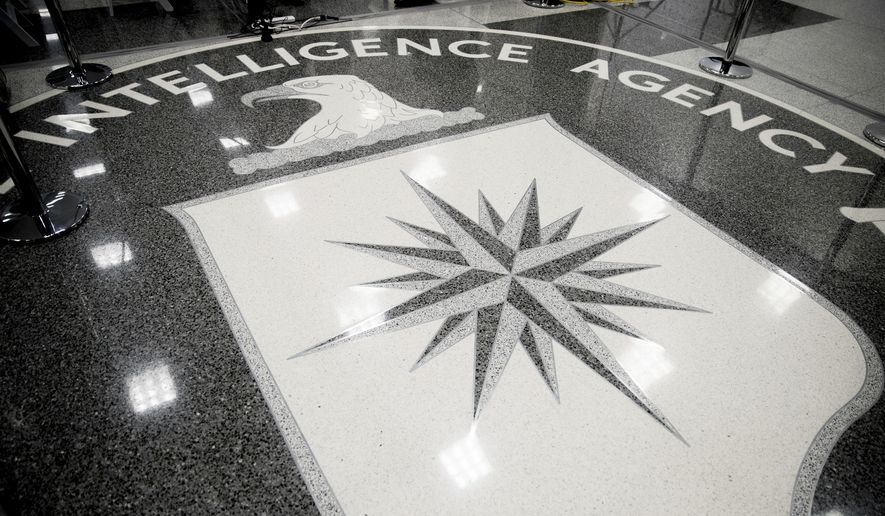The federal government has a new plan to stop China from buying up America’s intellectual property from taxpayer-funded researchers: Pay scientists more taxpayer dollars to turn their research into American businesses.
The Defense Advanced Research Projects Agency said it witnessed an uptick in foreign investors aggressively targeting its early-stage researchers in the past five years and thinks outcompeting other countries will help stop a brain drain.
Federal prosecutors have pursued scientists and technologists compromised by China, which is advancing a “Made in China 2025” plan to become the world leader in high-tech manufacturing for several critical sectors.
DARPA, the Department of Defense’s research and development arm that takes credit for birthing the internet, is keen on fighting to maintain America’s technological advantage. It plans to take 150 technologies out of its labs and transfer them to the private sector.
Kacy Gerst, DARPA’s chief of commercial strategy, helped lead a pilot program of 30 research teams in the biotechnology and microelectronics sectors over the past two years and said she saw firsthand foreign investors going after researchers. She would not provide details about what technology was targeted or who was behind it.
“There were performers in that portfolio that when we started to work with them, the only offer of investment that they had was a foreign term sheet,” Ms. Gerst said. “And they’ve been turned down by U.S. investors just because they have an exquisite technology that has a lot of promise [but] that U.S. investors don’t see that they have a strong business team or a compelling business case.”
To stop foreign investors from buying up intellectual property and tempting America’s brightest minds into handing over the goods, the federal government has pursued a multifaceted strategy. As the government’s Committee on Foreign Investment in the United States looks to strengthen the walls surrounding intellectual property in its reviews of commercial transactions, DARPA is teaming with the CIA-contracted venture capital fund In-Q-Tel to “run faster” in the race against foreign investors.
In-Q-Tel is an intelligence community-funded nonprofit that received about $495.3 million in taxpayer funds over five years, through 2018, to invest in private-sector companies, according to paperwork filed with the IRS. Its new division, IQT Emerge, was established this year with plans to take hidden government research and development efforts to the private sector.
DARPA’s new effort will give its researchers an average of $250,000 to hire a “seasoned entrepreneur or business executive,” and In-Q-Tel will provide its guidance and knowledge of developing government products for the national security community within the private sector. IQT Emerge also plans to help DARPA add artificial intelligence and cyber projects to its portfolio.
“We build with U.S. resources, we build with U.S. knowledge, we expose to the U.S. investment community, we expose to the U.S. customer base, and that allows them to be able to generate those first one, two to five years of early company generation,” said Simon Davidson, IQT Emerge executive vice president. “Creates stability, it creates a longer-term viability for what is the original idea of the researcher at DARPA that has a vision over the horizon, what’s going to happen in any number of these exciting segments.”
Among the early investments DARPA made are companies such as LightDeck Diagnostics and Embody. The COVID-19 pandemic testing headache is a problem LightDeck Diagnostics aims to help solve with rapid tests for COVID-19, as well as cardiac problems and sepsis. Embody is a medical device company building regenerative products to repair destroyed ligaments or tendons, such as bioengineered implants for a torn rotator cuff.
One challenge for DARPA and IQT Emerge is avoiding placing a bet on the next Solyndra. During the Obama administration, the Department of Energy gave solar power company Solyndra a $535 million loan guarantee, but the company went bankrupt and became a black eye for President Obama’s agenda.
In-Q-Tel and DARPA’s individual track records include more prominent hits, lesser-known misses and smaller investments that diminish the potential fallout. Former In-Q-Tel portfolio company Palantir scored an initial public offering larger than $20 billion last year.
If other Silicon Valley “unicorns” are hidden within the DARPA projects or the wider intelligence community, IQT Emerge aims to play a leading role in turning them into valuable businesses. A unicorn is a term referring to a privately held company with a public valuation of more than $1 billion.
Mr. Davidson said In-Q-Tel’s portfolio includes hundreds of companies, and he thinks his partnership with DARPA could help turn Ms. Gerst’s pilot project into a program that counts hundreds of successful projects in its portfolio.
• Ryan Lovelace can be reached at rlovelace@washingtontimes.com.




Please read our comment policy before commenting.